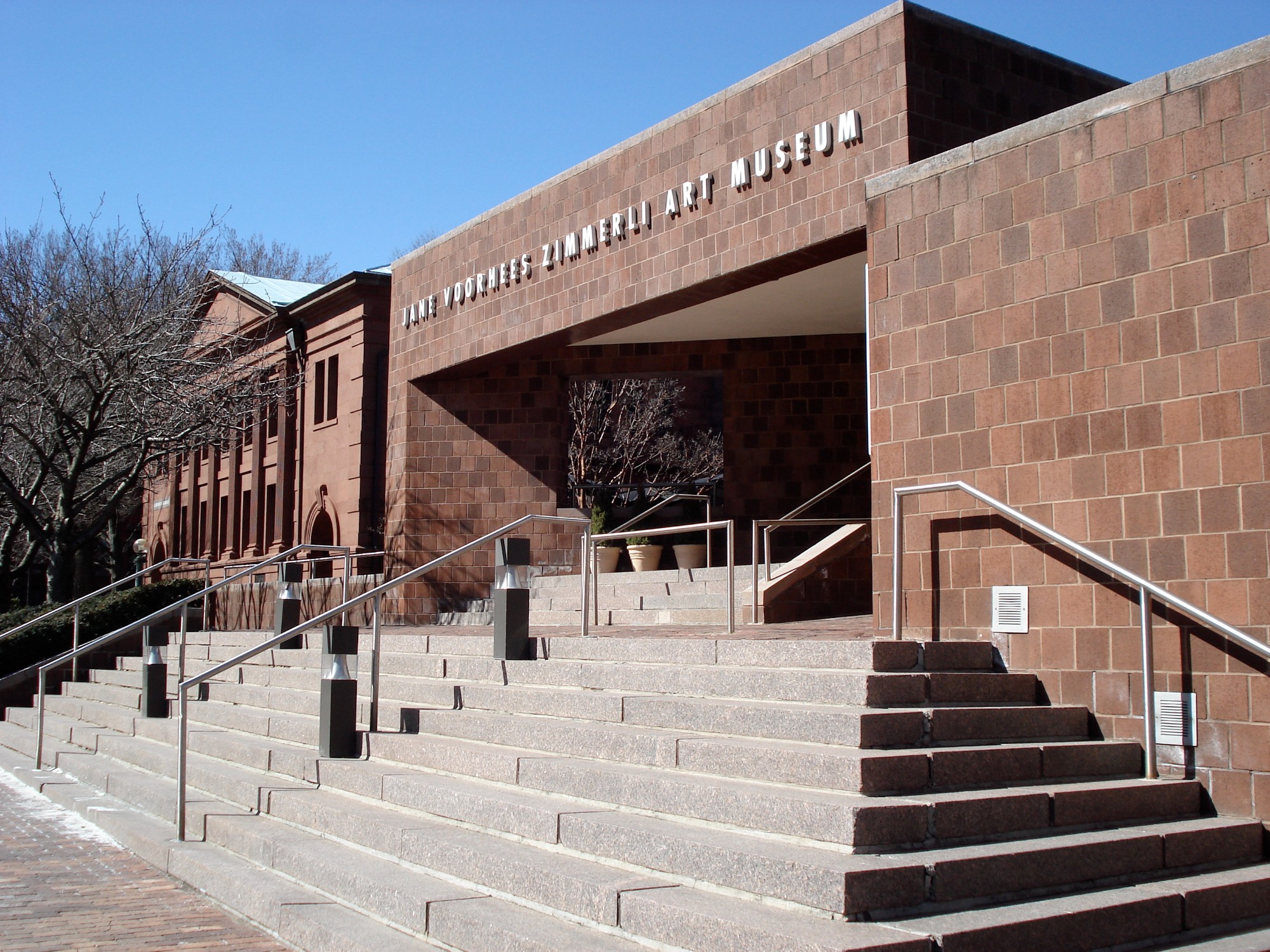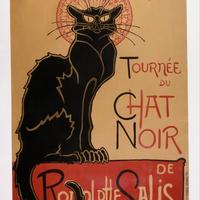More about Zimmerli Art Museum
Works at Zimmerli Art Museum

Contributor
The name of the Zimmerli Art Museum, a part of Rutgers University, with its collection of over 60,000 works, reflects the sweetness of the love of two sons, the late Ralph and Alan Voorhees, for their mother.
Jane Voorhees Zimmerli, a widow, raised the two boys during the Great Depression, and Ralph, an investor and philanthropist, graduated from Rutgers decades before renaming the museum. Sorry to disappoint you, but these Voorheeses are not related to the Voorheeses in the Friday the 13th franchise, the Marvel supervillain, or the characters from "The Unbreakable Kimmy Schmidt."
One of the Zimmerli's many fascinating assets is its Dodge Collection of nonconformist Soviet art, spirited away from the cryptic world behind the Iron Curtain in the cold days of the Cold War by economics professor Norton Dodge and his wife, Nancy. It seems that being "genially rumpled," and, therefore, somewhat unassuming, helped Norton Dodge to escape the severe glances of Soviet authorities, none of whom managed to prevent the Dodges from amassing a collection of 17,300 works, with an estimated value of over $30 million, which didn't sufficiently conform to the Soviet Union's strict standard of Socialist Realism. Socialist Realism, influenced by David and previous revolutionary art movements, filled our souls with repetitive images of washboard-abbed, heroic young worker men and equally militant women and children. In many ways, the style is not at all opposed, aesthetically, to Norman Rockwell works or other art that was popular in the U.S. during the same period, and the Soviets were specifically interested in redacting works which did not fit the mold in terms of sexual or religious content. Assemblage artist Anatoly Brusilovsky, for example, caught flak for his work Two Ideas, which juxtaposes the Russian Orthodox cross with the Yiddish Magen Dovid. Good heavens!
What about U.S. nonconformist art? In a thoughtful way, the Zimmerli addressed this question, too, with its exhibition The Communist Guide to New York, featuring photos by Yevgeniy Fiks of New York buildings, conspicuously without public plaques or other honors, which played important roles in the development of the communist movement in the last century. The exhibition combines this alternative history with a hidden gay history, which is connected in a subterranean kind of way—during the mania of McCarthyism, Fiks says, "Gays were suspect as well, because it was believed that they were more susceptible to Communist propaganda than straight men, and that they could be easily blackmailed and coerced to cooperate with Soviet spy networks."
As of this writing, the Zimmerli's director is Tom Sokolowski, a brilliant curator and writer who helmed the Andy Warhol Museum for fourteen years. He's a co-founder of Visual AIDS, an organization dedicated to raising public consciousness regarding the human cost of AIDS, one of whose programs is the Day Without Art, based on the idea that if we kept ignoring the disease, "there would at one point be no artists to hang art on the walls, no museum professionals, no critics, no art handlers and no visitors. So it would be a day without art," Sokolowski says. MTV even took a minute from "Video Killed the Radio Star" for one minute of silence. "it is not just gay people who get AIDS. Transmission is transmission," Sokolowski adds. When Warhol's friend Robert Hayes was diagnosed with the horrible disease, Warhol tearfully wrote in his diary that it was too painful to call Hayes: "It's too abstract. I just can't do it."
Sources
- "A Non-Conformist University Collection." Sotheby's, Oct. 1, 2018, https://www.sothebys.com/en/articles/a-non-conformist-university-collec….
- Brightman, Brendan. "Zimmerli art director tells his story on AIDS activism at epidemic's peak." The Daily Targum, Dec. 10, 2018, https://www.dailytargum.com/article/2018/12/zimmerli-art-director-tells….
- Dillon, Brian. The Hypochondriacs: Nine Tormented Lives. New York: Farrar, Straus and Giroux, 2010.
- Fox, Margalit. "Norton Dodge Dies at 84; Stored Soviet Dissident Art." The New York Times, Nov. 11, 2011, https://www.nytimes.com/2011/11/13/arts/norton-dodge-84-economics-profe….
- Himmelfarb, Katie. "Ralph W. Voorhees, Rutgers alumnus, civic and philanthropic leader, dies." Rutgers, Nov. 6, 2013, https://bloustein.rutgers.edu/ralph-w-voorhees-rutgers-alumnus-civic-an….
- Kurchanova, Natasha. "Dialogue between Yevgeniy Fiks and Thomas Sokolowski about Fiks’ recent show at the Zimmerli Art Museum." ArtMargins, Aug. 16, 2019, https://artmargins.com/dialogue-with-artist-yevgeniy-fiks-and-thomas-so…
- Strauss, Elaine. "A Portrait of the ‘New Guy’ at the Zimmerli Museum." PrincetonInfo, Feb. 7, 2018, https://princetoninfo.com/a-portrait-of-the-new-guy-at-the-zimmerli-mus….
Featured Content
Here is what Wikipedia says about Zimmerli Art Museum at Rutgers University
The Jane Voorhees Zimmerli Art Museum (known popularly as the Zimmerli Art Museum) is located on the Voorhees Mall of the campus of Rutgers University in New Brunswick, New Jersey. The museum houses more than 60,000 works, including Russian and Soviet Nonconformist Art from the acclaimed Dodge Collection, American art from the eighteenth century to the present, and six centuries of European art with a particular focus on nineteenth-century French art. The museum also is noted for its holdings of works on paper, including prints, drawings, photographs, original illustrations for children's books, and rare books.
Check out the full Wikipedia article about Zimmerli Art Museum at Rutgers University











